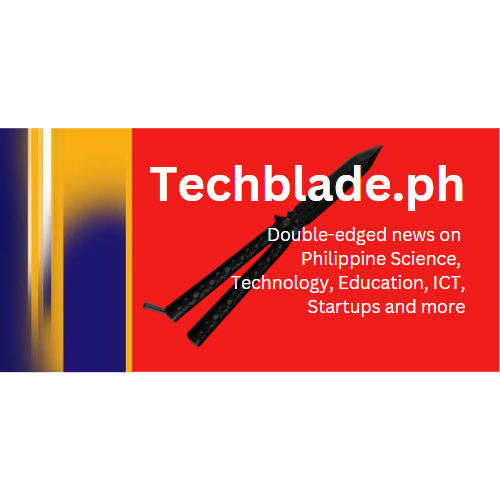Thirty-nine scientists from UP Diliman (UPD) and UP Los Banos (UPLB) were recognized for 13 inventions in the awarding ceremony of the Invention Disclosure Incentive on April 8 at the UP Board of Regents Room.
Seven inventions were from UPD while six were from UPLB. Of the seven from UPD, three were from the Electrical and Electronics Engineering Institute (EEEI) and one each, from the Institute of Biology (IB), Department of Chemical Engineering (DChE), Marine Science Institute (MSI), and National Institute of Physics (NIP). UPLB’s Institute of Chemistry (IC) and National Institute for Molecular Biology and Biotechnology (BIOTECH), meanwhile, were awarded for three inventions each.
Dr. Edward Barlaan of IB created “DNA Probe Kits for Bacterial Pathogens,” which allows for “real-time detection of bacterial pathogens in fishes and water samples.” This ultimately leads to the improvement of fish farm management.
“Modified Bentonite as Reinforcing Filler for Natural Rubber” was the invention of Dr. Bryan Pajarito of DChE. This can be used to “enhance the hardness, tensile, and compressive properties of natural rubber.”
The “Portable Smart Surface System,” converts most flat surfaces such as table-tops or whiteboards into tap-sensitive interfaces connected to a computer. This was by Dr. Nestor Michael Tiglao of EEEI and Computer Engineering alumnus Charles Kevin Verdad.
Another project from the EEEI was the “Model-based Implicit Palm Rejection for Tablet Devices” by Dr. Rowel Atienza and Engr. Riyeth Tanyag. A software application that “makes use of implicit palm rejection method”, it allows users to write on the gadget comfortably for an “experience as close to natural handwriting as possible.”
The third EEEI winning invention was “Rapid E-Vehicle Charging in Minutes (CharM)” by Prof. Niño Christopher Ramos and Engrs. Emmanuel Brian Arceo, Raphael Victor Canseco, Rovinna Janel Cruzate, Billy Joel Esquivel, Karl Lyndon Pacolor, and Leo Allen Tayo. It provides for the charging of electric vehicles “in as fast as 30 minutes without compromising the user’s safety and the equipment’s integrity.”
National Scientist and Professor Emeritus Lourdes Cruz, Assistant Vice President for Academic Affairs Rhodora Azanza, Nero Austero, Karen Grace Bondoc, Raphael Junnar Dumalan, and Peter Paolo Rivera of the MSI won for “Biotoxin Adsorption Toxin Tracking.” It is used to detect minute amounts of paralytic shellfish toxin and harmful algal bloom (HAB) which could “provide a clear picture of the bloom dynamics, environmental persistence and toxin variation of HABs in tropical marine waters.”
“A Semiconductor Element with a Constricting Buffer Layer” was the product of Dr. Elmer Estacio, Dr. Arnel Salvador, Dr. Armando Somintac, Joselito Muldera, and Cyril Sadia of NIP. According to the group, it is a method of “manufacturing Terahertz radiation emitter semiconductors by using Gallium antimonide (GaSb) as substrate and Indium arsenide (InAs) as epitaxial layer with a buffer layer of Gallium arsenide to improve adhesion between the lattices of GaSb and InAs.” The project was undertaken with the University of Fukui, Japan.
UPLB IC Prof. Annabelle Abrera and Hazzel Joy Adra’s “Larvicidal Compounds from Bayati against Mosquito Larvae” is a “simple and safe method” of using Bayati compounds to kill mosquito larvae by mixing it with the infested water.
IC Director Hidelisa Hernandez and Dr. Veronica Sabularse were recognized for two inventions. “Coating Formulation for Postharvest Application to Fruits,” which they did with Rhea Mallari, extends the shelf life of fruits. “Process for Hemicellulose Extraction from Pineapple Leaves,” which they undertook with Adonis Yanos, has streamlined the process of extracting hemicellulose from pineapple leaves. Hemicellulose is “a high-value polysaccharide, which has beneficial applications in the food and beverage, animal, chemical, and biomedical industries.”
“Recombinant Thermo-acid stable Endoglucanase” was by BIOTECH Professor Emeritus Asuncion Raymundo and Dr. Richard Tambalo, with Dr. Amy Grunden of North Carolina State University, USA. According to the team, the invention improves the hydrolitic process that, in turn, “improves the release of glucose sugars for use in bioethanol production.”
“Enzymatic Modification of Cacao Pod Husk as Dietary Fiber Source” is also from BIOTECH and is the work of Dr. Teresita Ramirez and Arsenia Sapin. It is a process that obtains “anti-oxidant rich modified fiber with potential applications as fiber supplement, and food and beverage ingredient.”
The third award of UPLB BIOTECH was for the invention of Dr. Reynaldo Dela Cruz and Dr. Joy Zarate called “Mykoplus.” It is a “biofertilizer or microbial inoculant that can be applied to seeds or planting materials to enhance seed germination, improve resistance to pathogens, and increase flowering and fruiting.”
In his speech, UP President Alfredo Pascual lauded the awardees for helping UP become a “research-intensive institution.” Later in the program, he announced a “significant change in procurement rules” which was met with much applause. The University “may now do negotiated procurement directly with foreign suppliers” for equipment and services not available in the country. This will eliminate going through agents and distributors that add cost to purchases.
Pascual was informed by the Government Procurement Policy Board of this development and he was hopeful that the implementing rules and regulations would come out in April.









0 Comments